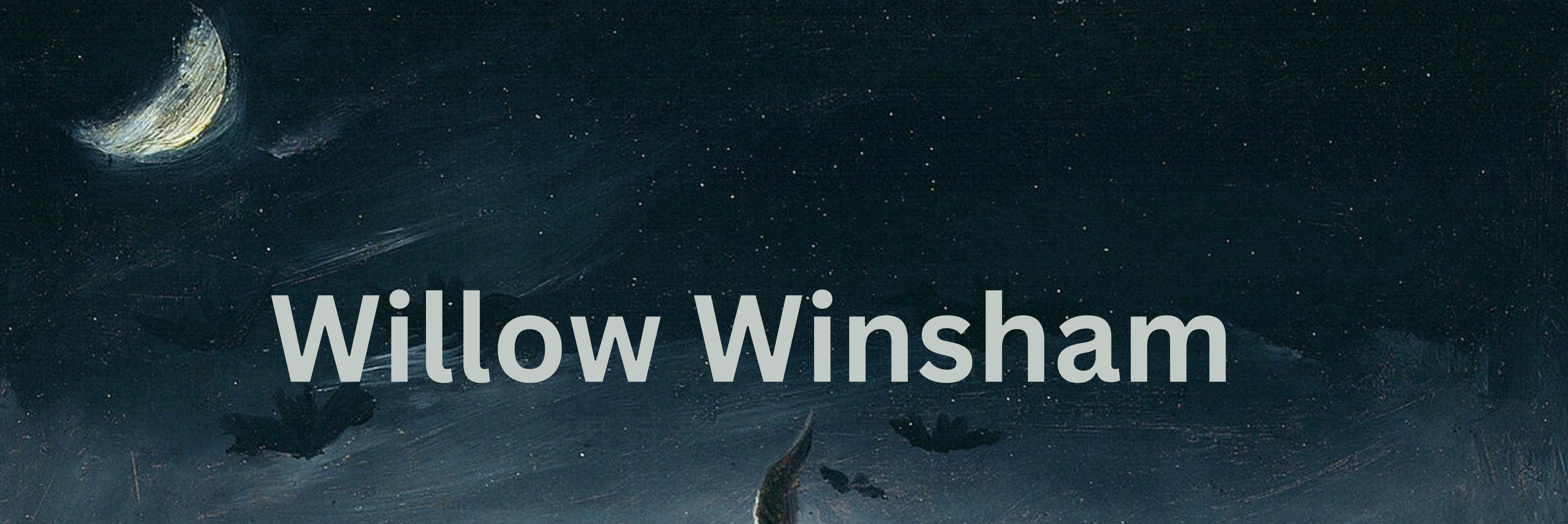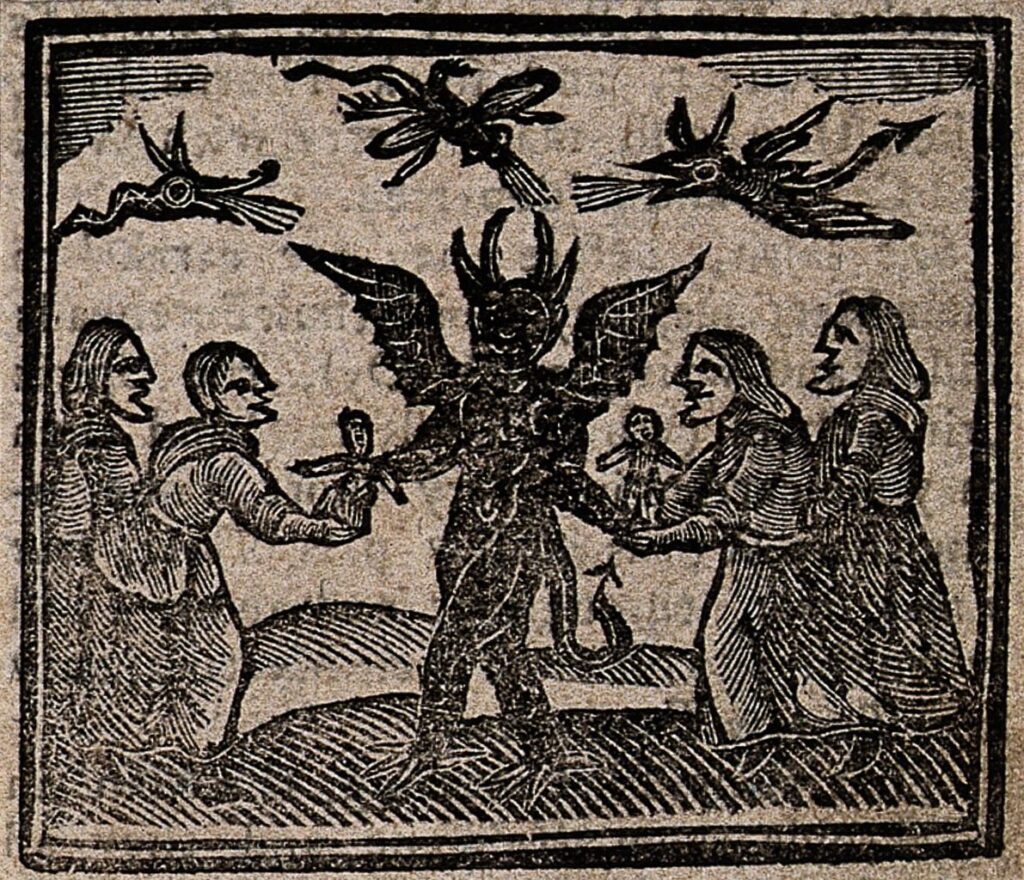Malmesbury, Wiltshire, 1658
One day a woman known as “Widow Orchard” asked Mary Bartholomew, Daughter of Hugh Bartholomew the brewer, for some yeast. Mary told the widow that there was no yeast to spare, but Orchard suspected – correctly – that she was lying. Telling the young woman ominously that “Then you will give me none? ‘twere better for you you had,” Orchard left, mumbling unheard words to herself.
Directly after her departure, a strange event occurred in the room upstairs where the brewer kept his money chest. The chest was lifted and dropped with enough force that it rocked the whole house, and a loud crack and the sound of coins jingling were heard from those below. Assuming that his money had been stolen – two hundred pounds, not a small sum – Bartholomew decided Widow Orchard was to blame and quickly hurried after her.
When he arrived at her house she did not appear to be there, despite Bartholomew calling that he had six pence to give her if she came out. A neighbour of Orchard’s appeared and Bartholomew related what had occurred: Orchard herself then appeared to inform him indignantly that he was lying – the chest was not broken and his money was still there; only a nail or two were drawn. Bartholomew hurried home, to discover that the Orchard had been right.
Correctly suspecting that it was not wise to linger, Orchard quickly packed up what belongings she could carry with her and fled from the town. She was not seen or heard of for around four months.
During her absence, Orchard had another, more serious, incident when begging for food from the 17 year old daughter of a gardener in Burbage. The young lady refused to grant the request immediately, saying she needed to wash her hands and eat herself before she would give anything to the old woman. The gardener overheard and told his daughter to cut Orchard some bread and cheese – the girl replied that she would, as soon as she had eaten a little herself.
The girl would soon regret her reluctance to help. Before leaving, Orchard crouched down on the grass, muttering “mysterious words”. According to witnesses, she repeated this ritual three times before finally going on her way.
When washing her hands soon afterwards, the gardener’s daughter suddenly found her fingers “distorted in their joints, one this way, another that way, and with such extreme torment that she cried out as if one had been about to kill her.” She was in no doubt that Orchard was to blame, and men quickly followed in the direction she had taken.
It wasn’t until the third day however that they found Orchard, begging at the Manor House at Edington, about twenty miles from Burbage. Orchard was taken to Mr Lewes or Lewing, the owner of the manor, and she was examined and information taken. She was then returned to Burbage, despite her insistence she was not to blame for the girl’s condition. The culprit was, she assured people, “unwholesome” water. Orchard then asked for fresh water, and using one finger, “made three circles against the sun in it.” The girl then dipped her fingers into the same water, and found that she could once again use them.
Things did not go well for Widow Orchard. She was imprisoned at Salisbury not long afterwards, and was later convicted and executed for witchcraft.
Evidence for the Orchard or Archard family in the Malmesbury parish registers shows that they were present from at least the late 1590s, when several children were baptised to Nicholas Archard and his un-named wife. On 15 October 1634 John Archard married Elizabeth Willis, and it is likely that Elizabeth is the Widow Orchard who met her end on the gallows at Salisbury twenty-four years later. This couple had one child, Elizabeth, baptised the following February, just over four months after their marriage. On 29 December, 1646, John, son of John Archard, Miller, was also baptised. In March 1635, another daughter, Jane, daughter of John and Elizabeth, was buried, indicating that the couple had at least three children. John Archard himself was buried in January 1650, with his son John buried November 1652.
So at the time of her arrest and execution, Elizabeth Archard was either alone or with only one child potentially still alive, her daughter Elizabeth. She was said to be well known as a witch, and, damningly, was known to be an associate of Alice Elgar, a widow who had been executed for witchcraft several years earlier. Elizabeth Archard had clearly fallen on hard times since the death of her husband, reduced to begging from others in the town. Her story appears to be a classic case of charity denied, though as with so many other similar cases, her existing reputation and connections ultimately played a part in her fate.
What of Orchard’s supposed victims? Mary, daughter of Hugh and Margaret Bartholomew, was baptised 12 December, 1634, and was around twenty-four years of age upon her encounter with Widow Orchard. Interestingly, this was not to be Mary’s last brush with witchcraft; after her marriage to Robert Webb she was a main player in the hysteria that unfolded around several other Malmesbury women accused of witchcraft in 1672.
Special thanks to Lauren at Polaris Genealogy and Research for help accessing a hard to find record.
Eager for more tales of witches and witchcraft? Accused: British Witches Throughout History and England’s Witchcraft Trials by Willow Winsham are available now from Pen and Sword Books.

